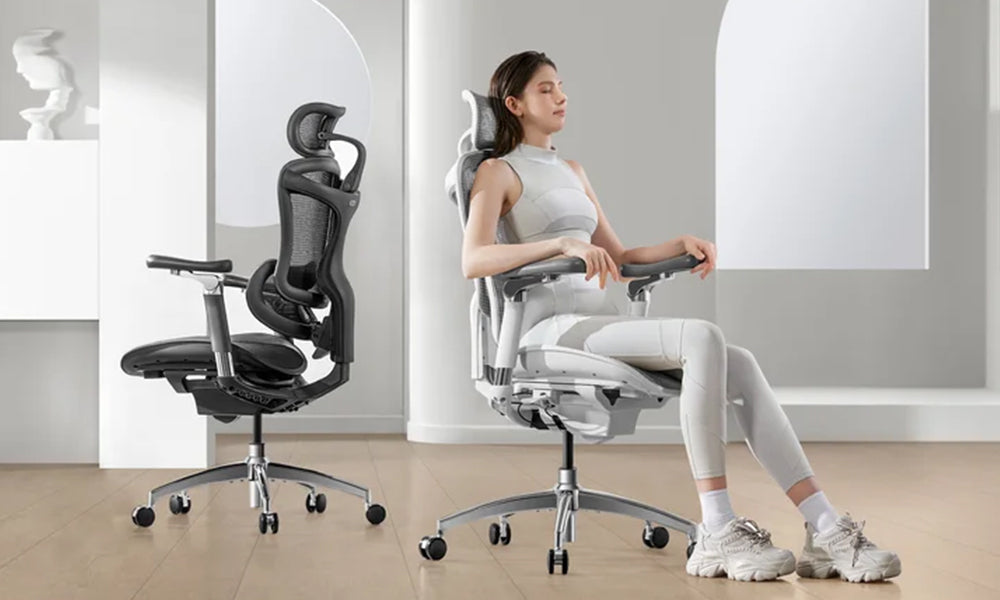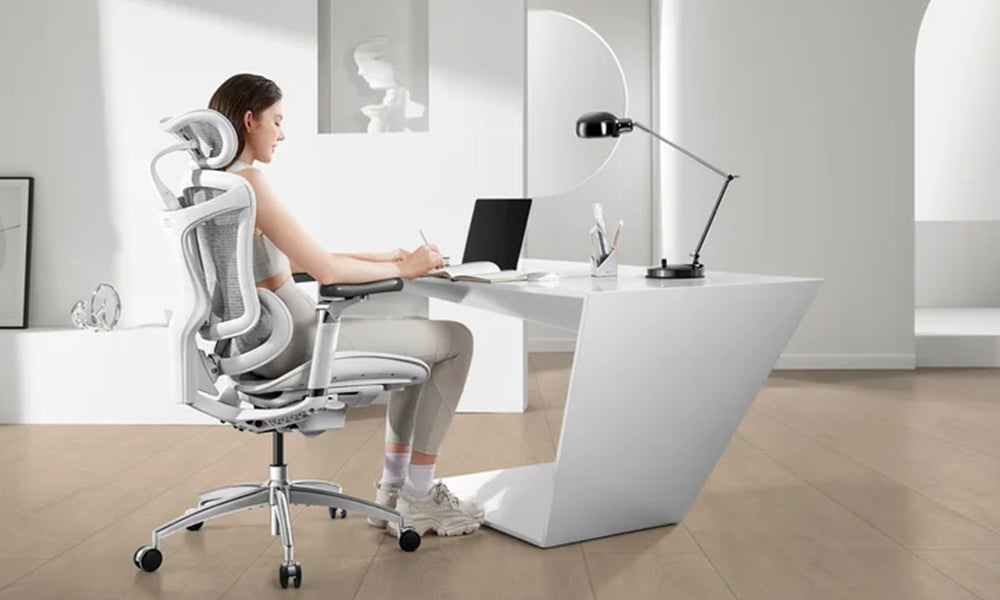According to research from health care institutions, people in modern society spend an average of 9.3 hours sitting in office chairs every day. A well-designed, comfortable chair not only provides appropriate support for your weight, but also ensures adequate comfort. The structure of the chair plays a vital role, with the mechanism being the most important.
I. The importance of mechanism
The sixth generation anti-gravity mechanism is technologically advanced
For nearly 30 years, Sihoo's anti-gravity mechanism has been at the pinnacle of comfortable seating technology. Often referred to as the heart of the ergonomic chair, this mechanism is comparable to the engines of cars and rockets and represents the Mount Everest of chair technology. It integrates functions such as overall adjustment knob, tilt angle control, and linkage support force control, which ultimately affects the comfort of the chair. The quality of a chair is fundamentally determined by its mechanics.
According to Blanton's "Postural Balance Theory," sitting for long periods of time can cause discomfort, even if the chair is comfortable and theoretically sound. This is where dynamic support becomes critical. This mechanism is key to achieving better adaptation of the chair back to the curvature of the spine and the dynamic support required for various body movements.
II. Current State of mechanism Technology
In the over 100-year history of ergonomic chairs, mechanism technology has evolved from fixed mechanism to the latest fiberglass mechanism, representing five generations of iterative updates. Each leap in mechanism technology is closely tied to breakthroughs in fundamental sciences such as ergonomics, materials science, and biomechanics.
First Generation Fixed mechanism: Basic and low-tech, mainly used for fixed support and cushion adjustment in ordinary chairs.
Second Generation Single Torsion Spring mechanism: Limited functionality, used in lower-priced ergonomic chairs.
Third Generation Single Coil Spring mechanism: Improved features compared to the previous generations but with uneven resistance during reclining.
Fourth Generation Double Coil Spring mechanism: Upgraded version with some independent design for better comfort.
Fifth Generation Traditional Double Fiberglass mechanism (Small Reclining Angle): Independent design and development, addressing issues of uneven resistance. However, limited by technology, the reclining angle is small.
Sixth Generation anti-gravity mechanism (Large Reclining Angle): Sihoo's breakthrough with a nearly flat 145° reclining angle, using high-performance glass fiber material and a four-bar linkage structure for superior comfort and support.

III. Sihoo’s innovative anti-gravity mechanism
The double fiberglass spring mechanism represents the pinnacle of current mechanism technology. However, this technology has been monopolized by the United States, Japan and other countries for a long time, resulting in Sihoo being limited to the low-end market. The launch of Sihoo Doro S300 with a large anti-gravity mechanism has attracted great attention in the industry.
Five major breakthroughs in Sihoo’s anti-gravity mechanism:
1. Angle breakthrough: 145° large tilt angle, healthy and comfortable
Achieving large tilt angles using dual fiberglass springs is a significant challenge. Sihoo's anti-gravity mechanism breaks through traditional limitations and provides a nearly flat 145° tilt angle, setting a world-leading standard.
2. Material breakthrough: creative use of aerospace materials
Taking into account the diversity of individual sitting positions and the frequent use of tilt, Nishihou's research team drew inspiration from spacecraft. They have introduced a special high-performance fiberglass material that meets the requirements of aerospace applications, forming a new generation of fiberglass spring substrates.
3. Mechanical breakthrough: elastic balance
Sihoo aerospace fiberglass springs overcome the inherent limitations of traditional spring materials such as uneven elasticity, fatigue, and poor durability. They have passed 300,000 durability tests and maintained balanced elasticity.
4. Structural breakthrough: four-bar linkage coordinated movement
According to research, a reasonable chair seat inclination can reduce the stretching of back and leg muscles and ensure even pressure distribution. Sihoo's innovative four-bar linkage mechanism allows the chair back to move in coordination with the user's body when leaning, providing dynamic support and relieving fatigue from prolonged sitting.
5. Comfort breakthrough: floating feeling, healthy support
Improving the comfort of the chair is a key goal of each generation of the mechanism. Sihoo's large-scale anti-gravity mechanism completely solves the fundamental problems of traditional spring mechanisms through aerospace fiberglass springs and four-link structures. Users can adjust the optimal softness according to their weight to achieve a floating feeling at any angle and a zero-gravity back pressure experience, ensuring no fatigue or discomfort when sitting for long periods of time.



